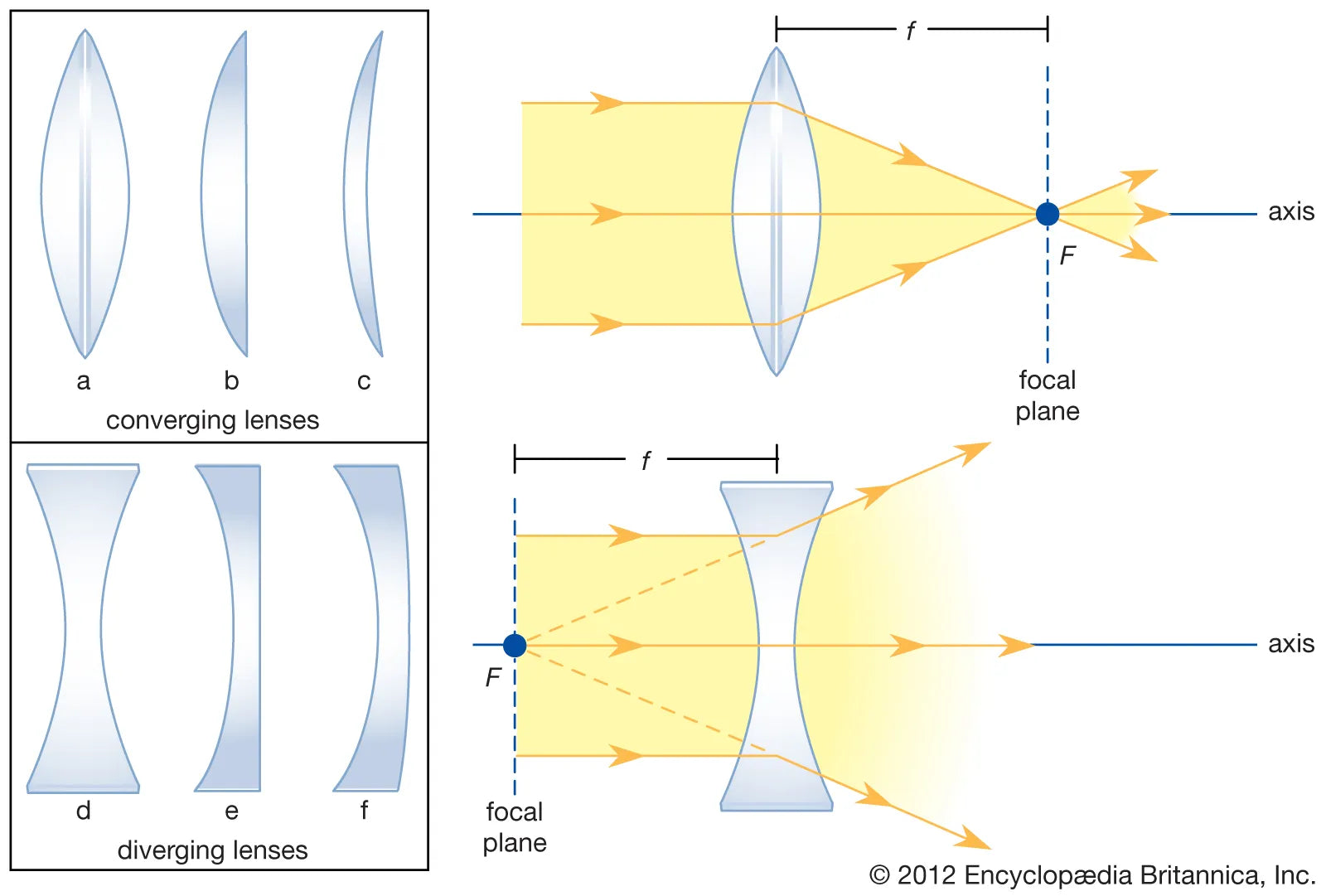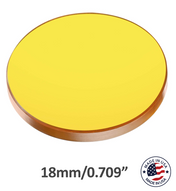Selecting the perfect lens for your application is more than a choice—it's a necessity. Different lenses have different roles, and at American Photonics, we are well-versed in these diverse needs. Our range is vast, accommodating various applications from research and industrial use to creative projects.
1. What are Focusing Lenses?
Focusing lenses are optical component that refracts light from its curved surface, leading to the convergence or divergence of the transmitted light. The optical properties of lenses are critical in many diverse applications. These applications range from the lenses in eyeglasses to complex laser systems used in industrial manufacturing processes. The material and shape of a focusing lens are key to optical system performance. Different optical materials can be selected for the visible spectrum. Whereas fused silica, calcium fluoride sapphire, etc. may also be employed for near IR to short-wave IR.
2. Types of Focusing Lenses
There are typically 6 types of focusing lenses, with each type having its special properties and applications. Four of them will be introduced briefly below.
2.1 Convex Lenses
A convex lens, also called a converging or positive lens, is a lens that is thicker at the center and tapers towards the edges, as seen in the image below. These lenses are commonly used in optics for their ability to converge light rays. When parallel rays of light pass through a convex lens, they refract and converge at a focal point. This focal point is the point where the rays or waves meet after refraction.
2.2 Concave Lenses
A concave lens, also called a diverging or negative lens, is a lens that diverges a straight light beam from the source to a diminished, upright, virtual image. A real image is formed by the actual intersection of light rays whereas a virtual image is formed by the imaginary intersection of light rays. Concave lenses can form both real and virtual images. As seen from the image above, these focusing lenses have a thinner center and thicker edges, curving inward.
Concave lenses cause parallel rays of light passing through them to diverge, refracting away from a common point on the opposite side of the lens. The focal point of a concave lens is the point from which these divergent rays appear to originate when extended backward. Concave lenses have various applications in correcting visual impairments such as myopia (nearsightedness), where the image focuses in front of the retina. Additionally, concave lenses are utilized in optical systems where the goal is to spread out or diverge incoming light, like beam expanders.
2.3 Plano-Convex Lenses
A Plano-Convex lens is a lens with one flat surface and one outwardly curved surface, resembling a magnifying glass, as seen in the figure above. The flat side is called the “Plano” side, while the outwardly curved side is convex. This lens design converges parallel rays of light passing through it to a focal point on the opposite side. Plano-convex lenses are widely used in applications such as imaging systems, projectors, and magnifying glasses, where the converging properties of the convex surface play a crucial role.
2.4 Plano-Concave Lenses
A Plano-Concave lens is a lens with one flat surface and one inwardly curved, concave surface. The flat side is referred to as the “Plano” side, while the inwardly curved side is concave. it has a negative focal length and can be used for light projection, beam expansion, or to increase the focal length of an optical system.
3. Principles of Focusing Lenses
3.1 Refraction
As light moves from one isotropic medium to another, it changes the direction of propagation and velocity, as seen in the figure below.
Snell’s Law law states that, for a given pair of media, the ratio of the sines of the angle of incidence Theta 1 and angle of refraction theta 2 is equal to the ratio of the refractive indices of the two media, or equivalently, to the ratio of the phase velocities in the two media (v1 and v2). This phenomenon is known as refraction. Convex lenses, with their outward curvature, converge parallel rays of light towards a focal point on the opposite side. Concave lenses, on the other hand, with their inward curvature, cause parallel rays to diverge. The interaction between the shape of the lens and the refractive properties of light is central to focusing.
3.2 Focal Length
The focal length of a lens is a critical parameter in understanding focusing principles. It is the distance from the lens to the point where parallel rays either converge (for convex lenses) or appear to diverge (for concave lenses). Focusing lenses with shorter focal lengths converge light more aggressively, while longer focal lengths produce more gradual convergence.
4. Wavelength Range and Aberrations
As mentioned above, Snell’s Law states that the angle of refraction is affected by the refractive index of a material. A change in wavelength will cause a change in refraction index this is called dispersion. Aberrations are imperfections in image formation. Various types of aberrations, such as chromatic aberration and spherical aberration, can distort images. Chromatic aberrations occur because a single lens cannot focus different wavelengths of light at the same point. Advanced focusing systems employ corrective measures, including aspherical lenses and multiple lens elements, to mitigate these aberrations and optimize image quality.
5. Looking for a Reliable Focusing Lenses Supplier?
With our state-of-the-art facility and production standards, American Photonics designs and manufactures quality focusing lenses in different types from concave, plano-concave, convex, plano-convex, and meniscus lenses. While off-the-shelves solutions are readily available, we’re also able to customize focusing lenses from standard to high-precision specifications.






